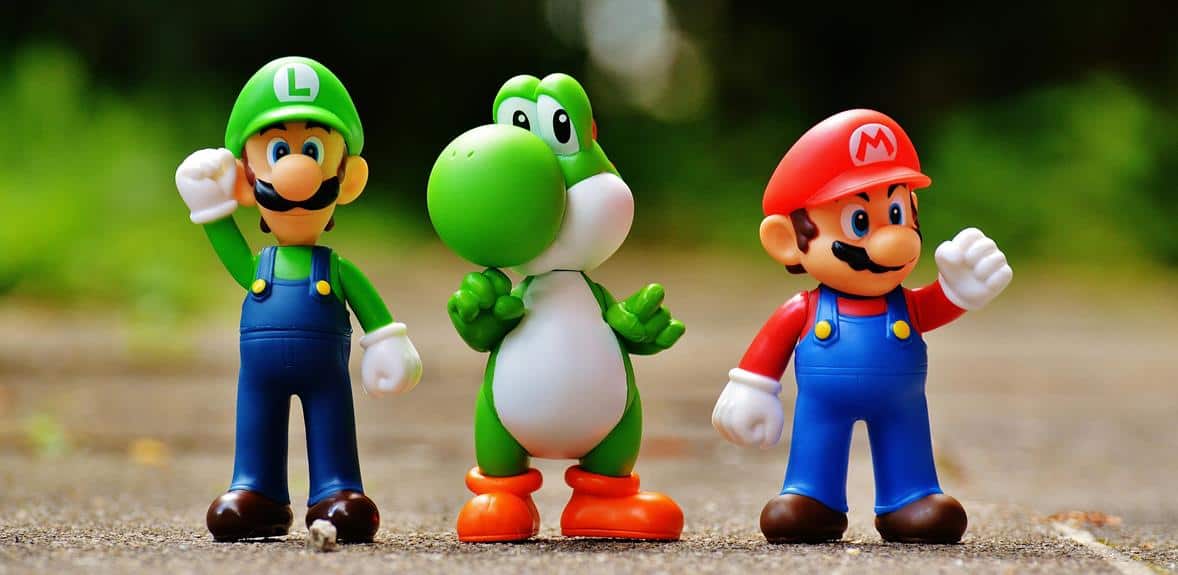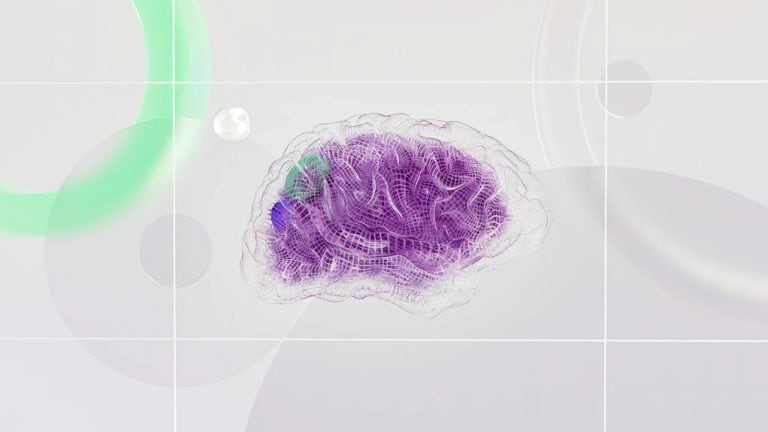Bluey Neurodivergent
As a curious observer of children's animated series, I couldn't help but ponder the possibility of Bluey being neurodivergent. The subtle hints scattered throughout the show hint at a deeper layer to her character, leaving viewers intrigued by the potential implications.
Could Bluey's behaviors be more than just typical childhood quirks? Exploring this angle not only sheds light on neurodiversity representation in media but also prompts us to reconsider our perceptions of characters we thought we knew so well.
Key Takeaways
- Bluey subtly portrays neurodivergent traits without explicit labels, fostering empathy and understanding.
- Characters' varied behaviors prompt discussions on ADHD and autism, promoting awareness and acceptance.
- Representation in Bluey sparks meaningful conversations on inclusivity and diverse cognitive profiles.
- The show's approach encourages empathy, celebrates differences, and advocates for a more inclusive media landscape.
Understanding Neurodiversity in Bluey

In exploring Bluey's character through a neurodiversity lens, it becomes evident that her behaviors elicit a spectrum of interpretations and reflections from viewers and experts alike. Some viewers, including myself, see Bluey's impulsivity, unique characteristics, and unconventional ways as potential indicators of neurodivergence. The possibility of Bluey being neurodivergent has sparked intriguing discussions within the fan community, enriching the understanding and appreciation of her character.
While the show's creators haven't officially addressed Bluey's neurodivergence, her behaviors, such as vocal stimming and distinct sleep patterns, resonate with traits commonly associated with neurodivergent individuals. This ambiguity surrounding Bluey's neurodivergence allows for a broad range of interpretations, contributing to the depth and complexity of her character. By embracing the idea of neurodiversity in Bluey, we can celebrate her uniqueness and promote greater inclusivity and representation in the media landscape. Let's continue to explore and appreciate Bluey's character with empathy and open-mindedness.
Exploring Characters' Neurodivergent Traits
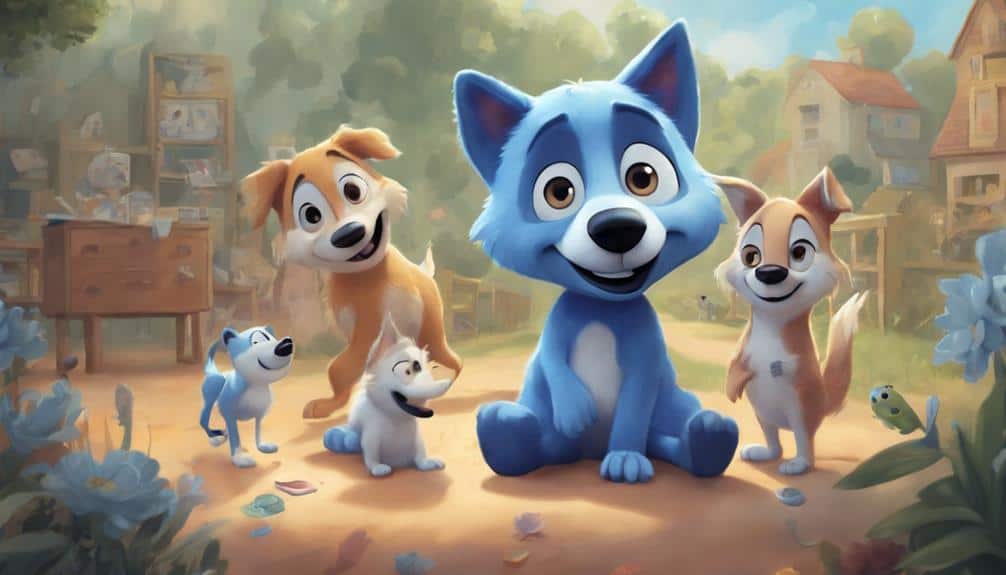
Exploring the neurodivergent traits of Bluey's characters reveals their unique quirks and behaviors that resonate with many viewers.
The depiction of communication challenges in the show adds depth and authenticity to the representation of neurodiversity.
Acknowledging the impact of such representation on fostering understanding and acceptance within the audience is crucial.
Character Quirks and Behavior
Bluey's unique quirks and behaviors prompt thoughtful discussions among fans about the potential presence of neurodivergent traits in the characters. Some fans associate traits like impulsive behavior, lack of focus, and sensitivity to loud noises with neurodivergence, particularly ADHD.
The debates around Bluey's behaviors, such as random noises and constant talking, raise questions about possible neurodivergent traits. Additionally, Bluey's unconventional learning paths, unique milestones, and vocal stimming behaviors contribute to discussions about potential neurodivergent characteristics.
The show's creators haven't confirmed or denied Bluey's neurodivergence, leading to ongoing speculation and analysis among fans. Bluey's portrayal of characters with quirks and behaviors aligning with neurodivergent traits sparks conversations about representation and diversity in children's media.
Communication Challenges Depicted
Characters in Bluey demonstrate various communication challenges that subtly hint at underlying neurodivergent traits, shedding light on the diverse ways individuals express themselves. Bluey's vocal stimming behaviors, such as random noises and constant talking, are indicative of neurodivergent traits.
Jack's struggles with focusing, following instructions, and remembering things suggest signs of ADHD. Additionally, Bingo's unique crawling style and Jack's school change for a better fit showcase the range of behaviors associated with neurodivergence.
The show portrays these challenges with understanding and acceptance, addressing issues like sleep patterns and individual developmental timelines.
Through these depictions, Bluey provides a platform for exploring neurodiversity in a way that's relatable and respectful, fostering inclusivity and awareness for all viewers, including Mini Bluey.
Neurodiversity Representation Impact
Portraying neurodiversity in characters like Bluey sparks meaningful conversations about the diverse range of cognitive profiles represented in children's media. Bluey's potential neurodivergent traits have led to in-depth analyses and interpretations, particularly regarding autistic characteristics. This speculation has prompted discussions about the importance of authentic portrayals in children's shows, fostering awareness and understanding of diverse cognitive profiles.
As an autistic adult, I appreciate how Bluey's representation of neurodiversity serves as a platform for promoting inclusivity and empathy, showcasing the significance of diverse perspectives in mainstream TV shows.
- Bluey's potential neurodivergent traits spark discussions about authentic portrayals.
- Speculation surrounding autistic characteristics prompts in-depth analyses.
- The show's depiction of neurodivergent behaviors raises awareness and understanding.
- Bluey's representation of neurodiversity promotes inclusivity and empathy among viewers.
Impact of 'Bluey Neurodivergent' Episode
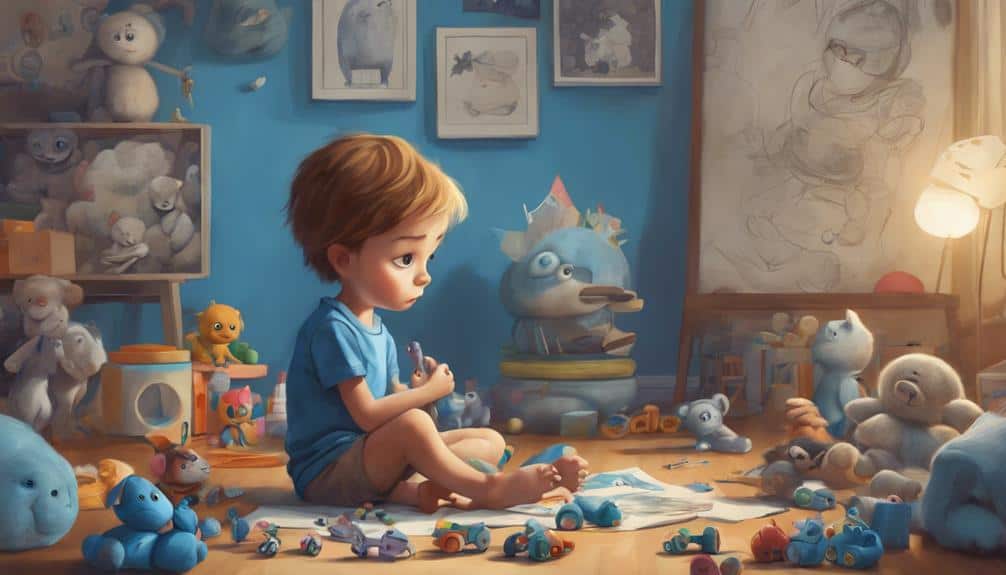
As I reflect on the impact of the 'Bluey Neurodivergent' episode, I'm struck by its role in promoting representation in media, fostering awareness and understanding, and creating a positive impact on viewers.
The episode not only showcases the challenges faced by neurodivergent individuals like Jack but also celebrates their everyday victories with empathy and authenticity.
Representation in Media
In the domain of children's media, the impact of Bluey's 'Neurodivergent' episode on representation resonates deeply with viewers, sparking important conversations about diversity and acceptance.
The portrayal of neurodiversity in Bluey has been instrumental in challenging traditional norms and promoting inclusivity. Through episodes like 'Army,' Bluey showcases neurodivergent traits in a nuanced and relatable manner, encouraging empathy and understanding among its audience.
Awareness and Understanding
The impact of the 'Bluey Neurodivergent' episode on awareness and understanding of neurodiversity in children's media is profound and transformative, sparking essential conversations about diversity and acceptance.
By portraying Bingo's experiences in a thoughtful and sensitive manner, the episode teaches viewers, through Dad's words and actions, about the importance of embracing differences.
Dad says and teaches Bingo with patience and empathy, showcasing how understanding and accommodating diverse behaviors can foster a more inclusive environment for all.
This representation not only sheds light on neurodiversity but also encourages viewers to approach others with compassion and acceptance.
'Bluey Neurodivergent' contributes significantly to the ongoing dialogue surrounding inclusivity and accurate representation in children's shows.
Positive Impact on Viewers
Through Bluey's thoughtful portrayal of neurodivergence in the episode 'Army', viewers are encouraged to embrace differences and cultivate empathy towards individuals facing unique challenges and displaying remarkable talents. Watching Jack navigate his daily life with both struggles and strengths can have a profound positive impact on how we perceive neurodivergent individuals.
- Highlighting Everyday Triumphs: The episode showcases Jack's small victories and challenges in a relatable manner.
- Promoting Acceptance and Inclusivity: Jack's family's supportive attitude sets an example for acceptance and understanding.
- Encouraging Conversations: 'Army' sparks discussions about neurodiversity and diverse experiences.
- Normalizing Neurodivergence: By avoiding stereotypes, Bluey presents neurodivergence as a natural part of life.
Representation of Neurodiversity in Media
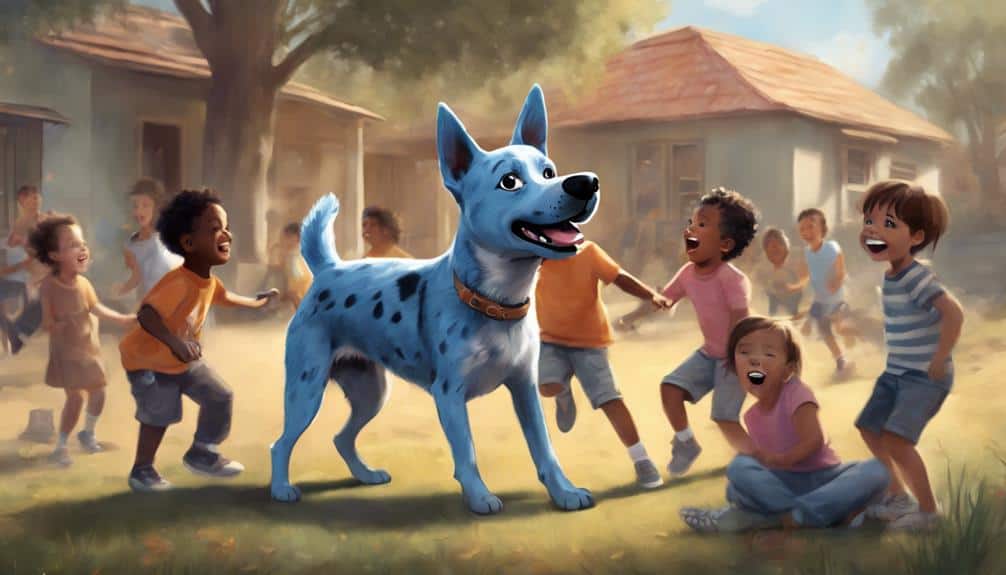
Amidst the evolving landscape of media representation, discussions surrounding neurodiversity have been ignited by Bluey's nuanced portrayal of diverse behaviors. Bluey's depiction of neurodivergent traits serves as a beacon of visibility in children's media, showcasing a range of behaviors that resonate with neurodiverse individuals. As viewers speculate about whether Bluey herself may be autistic based on her actions, the show inadvertently becomes a platform for raising awareness about neurodiversity and promoting understanding of diverse behaviors.
The representation of neurodiversity in media, particularly in a children's show like Bluey, is significant for advocates and viewers alike. By including neurodivergent traits in its characters, Bluey fosters empathy and acceptance, contributing to a more inclusive society. The show's approach to portraying diverse behaviors not only educates young audiences but also normalizes neurodiversity, showcasing the beauty of differences and the importance of embracing individuality. In a world where representation matters, Bluey's commitment to showcasing neurodiversity is a step in the right direction towards a more inclusive media landscape.
Bluey's Approach to Neurodiversity

Exploring the world of neurodiversity, Bluey subtly weaves in unique behaviors and characteristics among its characters, sparking meaningful discussions on potential representations of ADHD and autism. The show's approach to neurodiversity is nuanced and thought-provoking, fostering a deeper understanding of diverse behaviors and experiences.
- Subtle Depictions: Bluey's storytelling subtly incorporates neurodivergent traits without explicitly labeling characters, allowing for a more nuanced exploration of neurodiversity.
- Room for Interpretation: By not overtly defining characters with neurodivergent traits, Bluey leaves room for interpretation, encouraging viewers to contemplate and discuss the varied representations presented.
- Diverse Perspectives: Viewers analyze how Bluey's characters navigate challenges and differences, showcasing a range of perspectives on neurodiversity and promoting empathy and understanding.
- Awareness and Understanding: Bluey's approach contributes to raising awareness and understanding of different behaviors and experiences in children's media, creating a more inclusive and reflective portrayal of neurodiversity.
Lessons Learned From Bluey Neurodivergent
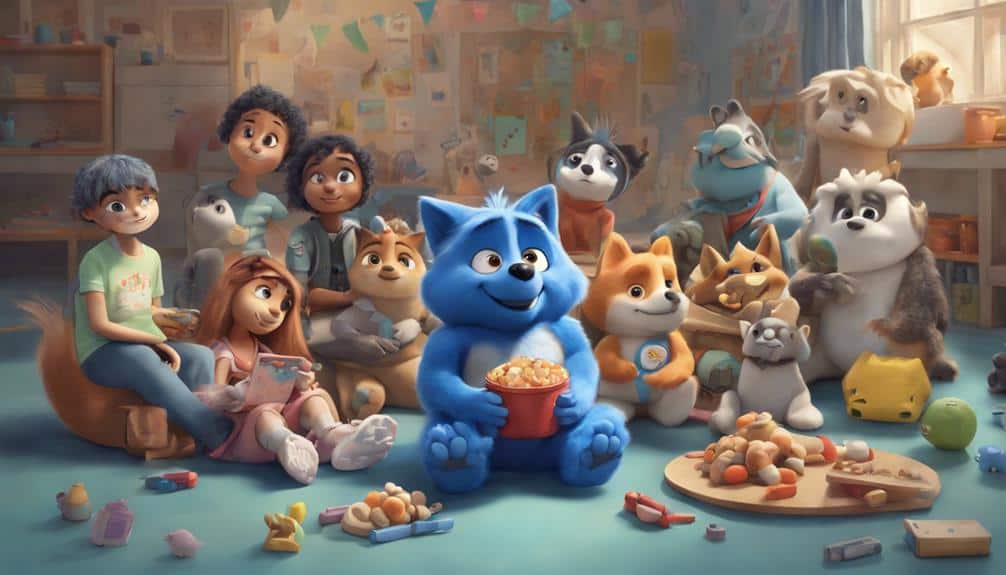
What valuable insights can we gain from observing Bluey's portrayal of neurodivergence?
Bluey teaches us that each child's developmental journey is unique, emphasizing the importance of creating a supportive environment tailored to the needs of neurodivergent individuals. By showcasing vocal stimming behaviors, the show sheds light on various traits associated with neurodivergence, promoting understanding and acceptance. Bluey underscores the pivotal role of parental attitudes in accommodating neurodivergent traits, emphasizing gentle parenting approaches that prioritize empathy and communication.
Through Bluey, we learn that embracing neurodiversity requires a deep commitment to understanding and celebrating differences. The show's portrayal of neurodivergence serves as a reminder of the significance of respecting individual privacy policies and nurturing a culture of inclusivity. By highlighting the benefits of gentle parenting, Bluey offers valuable lessons on fostering a supportive and nurturing environment for all children, regardless of their neurodivergent traits. Essentially, Bluey's representation of neurodiversity encourages us to approach every child with empathy, compassion, and acceptance.
Frequently Asked Questions
What Disorder Does Bluey Have?
I can understand the curiosity about Bluey's behavior and a possible diagnosis. It's important to remember that neurodiversity representation varies and shouldn't be limited to specific labels. Parenting strategies can focus on understanding and supporting individual needs.
What Characters in Bluey Have Disabilities?
I see various characters in Bluey with disabilities, showcasing neurodiversity representation and diverse character abilities. The show promotes understanding and acceptance, demonstrating the importance of inclusive storytelling for all viewers to appreciate.
Who Had ADHD in Bluey?
In Bluey, Jack has ADHD. It's invigorating to see neurodiversity representation in children's shows like Bluey. Jack's struggles with focus are relatable, and his family's support showcases both everyday challenges and victories.
Does Socks From Bluey Have Autism?
I believe Socks from Bluey exhibits traits aligning with autism, including sensory sensitivity and a strong focus on specific interests. His portrayal adds to the importance of neurodiverse representation in media, fostering inclusion.
Conclusion
As a fan of Bluey, I find the discussions around Bluey's potential neurodivergence fascinating. It's important to remember that representation matters, and seeing characters with diverse traits on screen can be empowering for viewers.
In fact, studies have shown that increased representation of neurodiverse characters in media can lead to greater acceptance and understanding in society. Let's continue to embrace and celebrate the uniqueness of all individuals, including those like Bluey.

